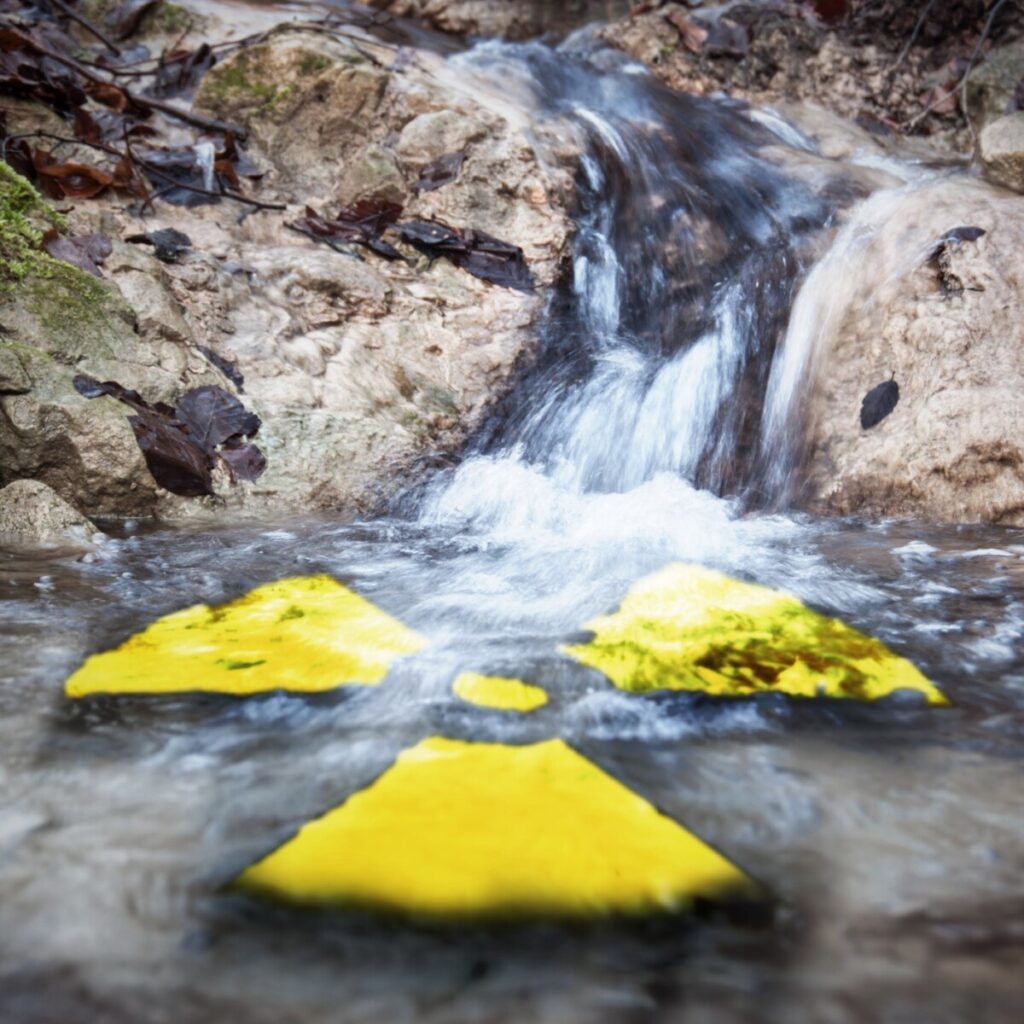Radon is a radioactive element found in some soil, rocks and groundwater across the United States. While it is rare, it is classified as a carcinogenic and should be removed from water.
Radon can be filtered from water by aeration devices or granular activated carbon filtration. Filtration should only be applied when the radon concentration is less than 10,000 picocuries per liter. The water is ideally treated by a whole house point-of-entry unit to prevent inhalation of gaseous radon molecules.
In this article, we will discuss radon, its sources and risks. We will explain the best way to test and treat your groundwater, including recommendations on filtration systems that contain granular activated carbon to stop radon from entering your house and drinking water.
What is radon and how does it enter our homes?
Radon is a radioactive gas – the heaviest within the noble gases, heavier even than air or hydrogen.
A colorless, odorless and tasteless chemical, it is generated by the radioactive decay of radium, which explains why it used to be known as radium emanation.
Radon seeps into the atmosphere as a byproduct of the breakdown of the radium present in some soil, rocks and groundwater. Since its source is scarce, plus the three isotopes that constitute it are short lived, natural radon is a rare element. Even so, by the late 1980s, it was recognized as a potentially serious health hazard.
The main health concern is from breathing high amounts of radon, which accumulate in poorly ventilated spaces near ground level, in particular home basements built over geological formations that contain uranium mineral deposits.
The radon in water can also become gaseous in your bathroom, laundry or kitchen, reaching your lungs via the inhalation route
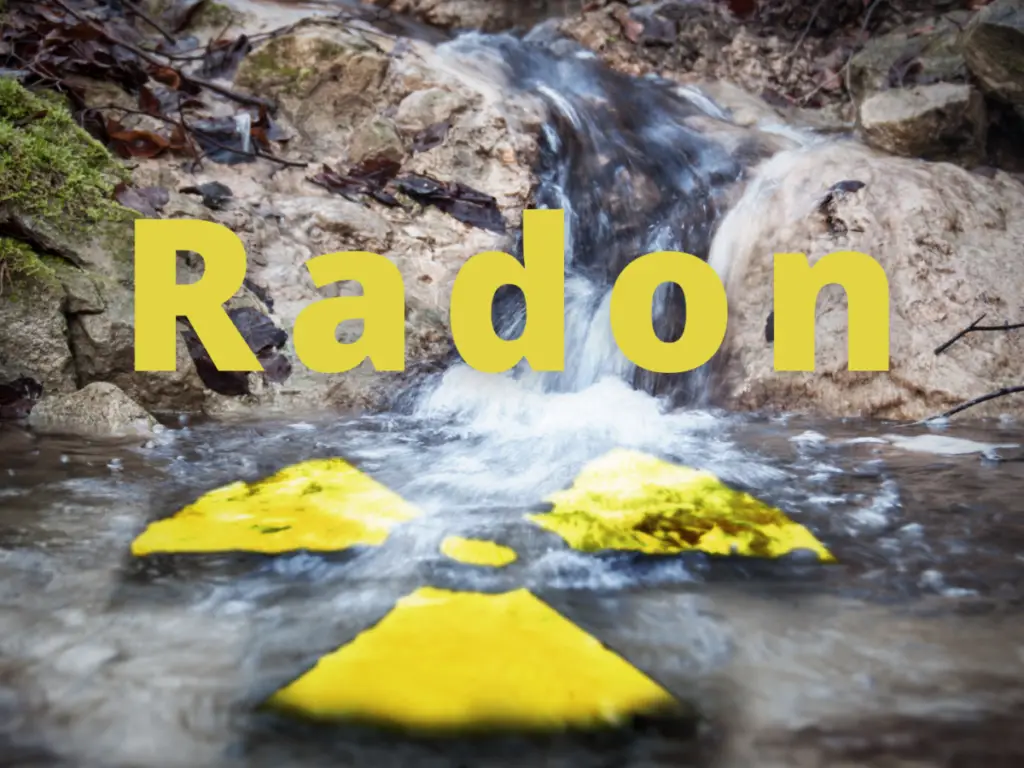
Radon also dissolves into water supplies served by bedrock wells. It is seldom a concern in public water systems, where the water quality is regularly monitored before supplying it to your home.
In fact, most of radon is released from the water sourced from lakes, rivers and reservoirs even before it enters the distribution system.
However, groundwater from springs, wells and boreholes, where there is a relatively short time between water extraction and its use, are more likely to result in an increased exposure to radon.
This gas can also enter a building through cracks in the foundation, plus it can be released with dust particles into our indoor air through regular household activities such as showering, dishwashing, and doing the laundry.
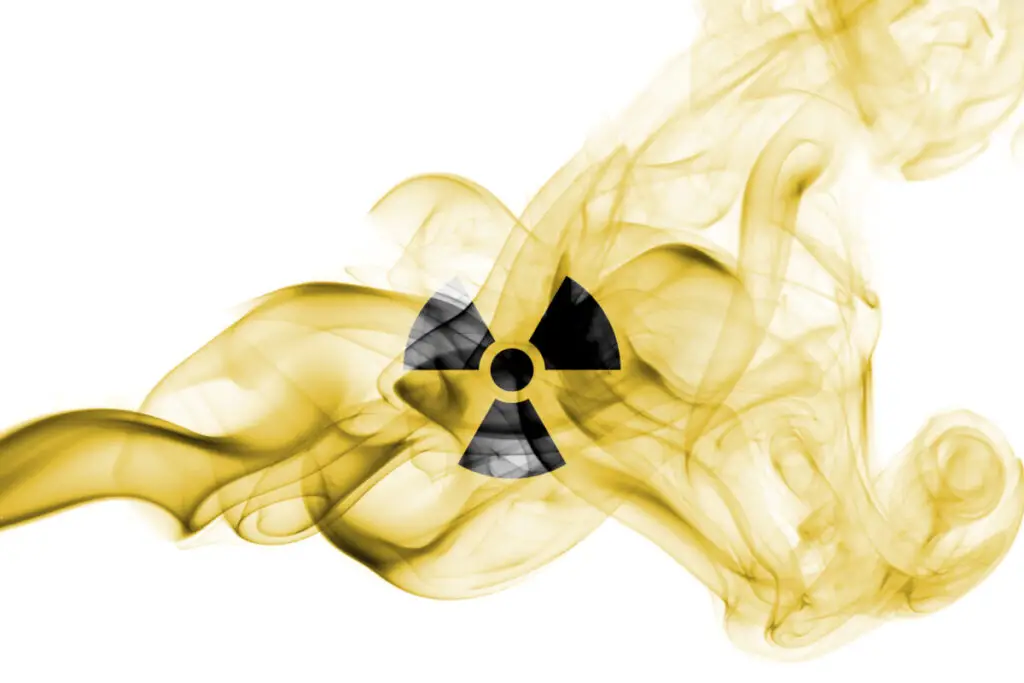
When radon is breathed into the lungs, it poses a serious risk of developing lung cancer.
While significantly lower than the inhalation route, there is certain risk associated with the ingestion of water with high levels of radon.
In fact, the risk posed by the radon released from water, even at typical groundwater concentrations, is estimated to be larger than the risks posed by other drinking water contaminants that have been subjected to regulation, such as disinfection byproducts (e.g., trihalomethanes).
Most of the radon in the water seeps into the air, although some of it remains dissolved. While there is not enough evidence to fully understand the risks of consuming drinking water containing radon, any dose of radiation to the lining of the stomach should be controlled, as it can diffuse into the stomach wall and damage sensitive cells.
The US Environmental Protection Agency (EPA) estimates that drinking water with too much radon over time leads to increased chances of stomach cancer, or other internal organ cancers. Plus, the decay of radon produces radioactive “daughters” (polonium, bismuth, and lead isotopes) that can be ingested from well water.
Lead, bismuth and polonium in drinking water can cause a variety of adverse health effects, some of which are very serious.
At the same time, once radon has entered the bloodstream through the stomach or small intestine, it is typically eliminated from the body through the lungs and will not target other organs. But the health effects from exposure to radiation generally take time to develop and can build up over time.
For that reason, the EPA recommends a maximum level of 4,000 pCi/L to minimize risks. They also advise that drinking tea or coffee with water containing radon does not pose a risk as the gas is released during the boiling process.
However, it is important to prepare it in a well ventilated area so as to not inhale it.
In terms of filtering radon out of your drinking water if you use a domestic well, the recommendations from the Radiation Protection Section are as follow:
- Private wells with radon concentrations at or above 10,000 pCi/L: Treatment of water should be considered in conjunction with a radon in air mitigation system.
- Private wells with radon concentrations between 4,000 and 10,000 pCi/L: Treatment of water should be considered optional.
Can radon be filtered out of our drinking water?
If you are concerned about the levels of radon in your water supply, the first step is to ventilate your bathroom, laundry room and kitchen to ensure any released gas is cleared out of your indoor air. This is an effective method to control exposure to moderate levels of waterborne radon.
The most recommended way to remove high levels of radon from drinking water is through a whole house (point of entry) treatment, so as to prevent the ingestion of dissolved radon as much as the inhalation of its gas.
It is important to keep in mind that radon is a radioactive element, thus the filtration system will require regular maintenance as per the manufacturer’s instructions, with special caution when handling dirty filters.
There are two methods that can effectively filter radon from your water:
- Aeration
- Granular Activated Carbon.
It is important to note that reverse osmosis does not remove gaseous contaminants such as radon.
1. Aeration treatment
Spraying water or mixing it with large volumes of clean air can remove over 99 percent of the radon gas from your water. The air needs to be safely discharged outside of the house through an exhaust fan, and the treated water pressurized to flow through your plumbing.
2. Granular Activated Carbon (GAC)
Carbon filters are capable of absorbing radon particles, cleaning the water from this radioactive contaminant.
However, the radon attached to the filter can potentially reach hazardous levels of radioactivity. Another words, carbon filters need to be changed frequently.
The carbon cannot be left for a prolonged time to avoid saturation, and its disposal should be done with extra care, generally by a specialized professional (but at least wearing gloves and a mask).
For that reason, this method should only be used for water with radon levels less than 10,000 pCi/L.
Two filtration methods to remove radon:
Crystal Quest Whole House Water Filter + Smart Multimedia
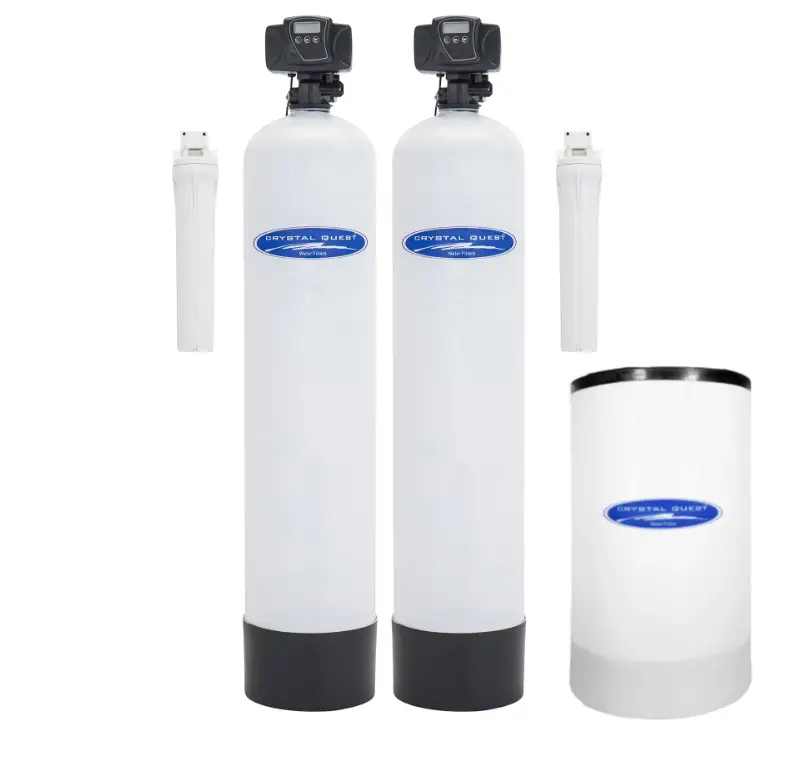
This acid neutralizing whole house system by Crystal Quest blends two types of coconut shell Granular Activated Carbon (Standard and Catalytic GAC) to reduce radon together with other heavy metals and inorganic substances.
Clearly Filtered Water Filter Pitcher
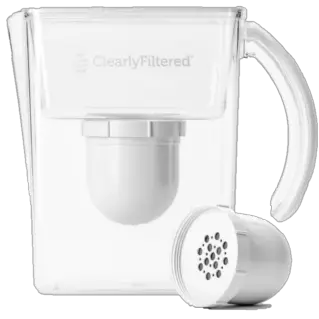
Whole house filters are certainly the ideal, however they are not always a viable option. This pitcher by Clearly Filtered features one of the most effective water filtration systems and is capable of removing up to 98% of the radon in water.
How can you test for radon?
If you are concerned about the levels of radon in the water that comes from the local utility, you can request your supplier to provide you with the annual reports.
If you have a private well, however, the levels of radon and other contaminants are your own responsibility and is up to you to ensure your well is monitored and maintained. If you suspect you may have radon in your well water, perhaps because you live in an area known to be rich in mineral deposits, you should first test your indoor air quality.
Testing for radon levels in your indoor air is typically inexpensive and easy, and can be quickly fixed. If indoor air levels of radon are 4 picoCuries per liter or higher, EPA suggests that you arrange to have your well water tested for radon at a state certified laboratory.
MyTapScore have a good quality Specialized Radon Water testing kit.
- Order today and they’ll send out the kit and instructions on how to collect the samples.
- Shipping is included.
- Samples are tested in a certified laboratory.
- You’ll get the results in about 8 days.
For more information and to order your specialized Radon Water testing kit click here.
Make sure you flush your plumbing for over 20 minutes to measure the radon concentrations in fresh water if your well has not been in regular use, as radon has a short life of approximately 3.6 days. It is also recommended to do a second test at least a month later to determine an average level, and that you follow the laboratory’s instructions to avoid contamination of the sample.
Related Questions
Do refrigerator filters remove radon?
Refrigerator filters with simple carbon or charcoal technology cannot absorb radioactive gasses such as radon. Neither can a reverse osmosis system. On the other hand, a refrigerator filter may clear tap water from dissolved radon, but cannot reduce the risk of exposure from gaseous radon emanating from the shower, washing machine or kitchen faucets.
Refrigerator filters can remove radon, as long as they contain granular activated carbon technology and the radon levels in the water are below 10,000pCi per liter. For example, the Clearly Filtered® Universal Fridge Filter removes up to 99.5% radiation in tap water.
Do carbon water filters remove radon?
Granular activated carbon filters can remove 99% of radon in water. However, as the radon attached to the filter accumulates, the carbon’s radioactivity increases. Thus maintaining and replacing the filter requires the exercise of extra caution.
A carbon filter needs to have a large surface to effectively adsorb radon, plus a long contact time is required to ensure filtration. It is also important that the radon concentration in the water is below 10,000pCi per liter.
Does radon evaporate out of water?
Radon is a gaseous chemical that sometimes appears dissolved in water but readily moves up into the air. Boiling or disturbing water releases radon into the atmosphere. For that reason, the radiation dose from radon in drinking water is normally low compared with that from the inhalation of radon present in indoor air.
Does a water softener remove radon?
A water softening system uses an ion exchange process to remove calcium and magnesium ions from hard water, which are replaced with sodium ions. Ion exchange is not an effective method to remove radon.
Do Pur water filters remove radon?
Pur water filters do not remove radon. All Pur filters can effectively remove the taste and odor of chlorine. The Plus pitcher and faucet filters can also remove some metals, pesticides and volatile organic compounds.
Here is a list of all the contaminants that Pur can effectively remove with their faucet systems and pitcher filtration models.
Do Zero water filters remove radon?
Zero water filters do not remove radon. These filters are particularly effective at removing total dissolved solids (TDS) and heavy metals from water.
Here is a list of all the contaminants that Zero can effectively remove with their faucet and shower systems.
Do Brita water filters remove radon?
Brita water filters do not remove radon. Brita water filters effectively remove chlorine from water, in addition to lead, copper, mercury and zinc.
Here is a list of all the contaminants that Brita can effectively remove with their faucet systems, pitchers, dispensers and bottles.

